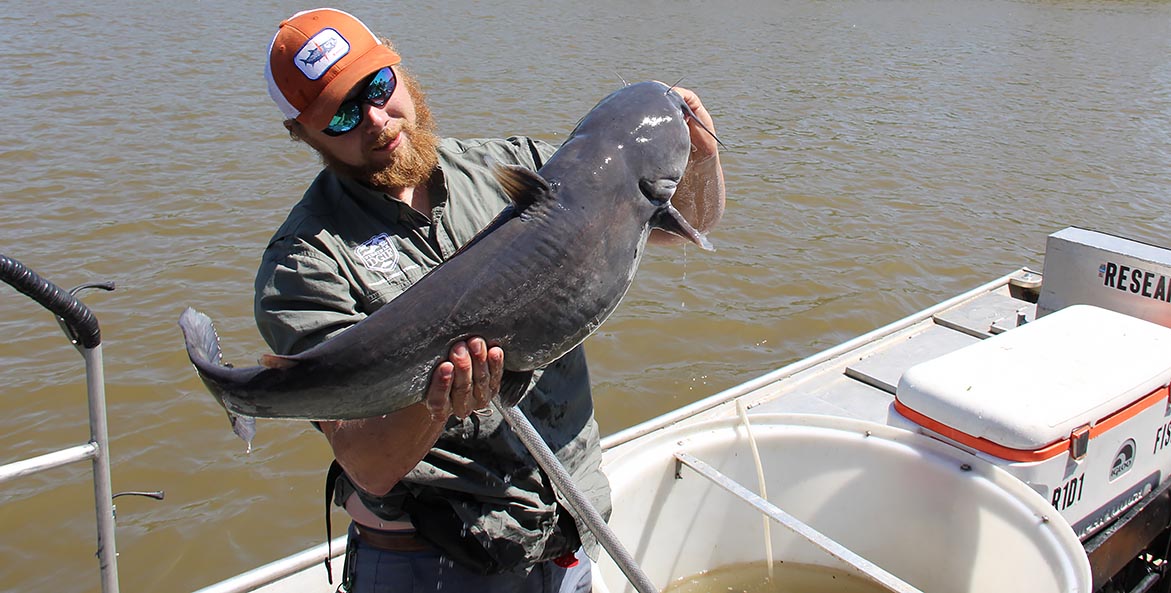Last month, Virginia wrapped up its legislative session and with it came big wins for the Bay’s fisheries. Throughout session CBF continued its long-standing advocacy for the Bay’s fishery resources, resulting in positive measures that will benefit oysters, menhaden, blue crabs, and the blue catfish fishery.
Expanding Oyster Shell Recycling
Before Virginia’s General Assembly even convened, CBF worked with lawmakers on ideas for legislation to incentivize recycling of oyster shells in Virginia. Shells are a precious resource, but some restaurants still throw oyster shells into the trash. Senator Monty Mason and Delegate Tim Anderson sponsored legislation that will encourage shell recycling. It does so by providing grants from a new fund to businesses and individuals who recycle shells, as well as organizations that maintain shell recycling bins.
Brent Cowan, owner and head chef of Heirloom Restaurant in Virginia Beach, was happy to see this legislation pass and believes that it will encourage businesses to recycle oyster shells for restoration.
“Now more than ever, it’s important to provide incentives for recycling shells,” said Cowan. “Restaurants continue to face many challenges coming out of COVID, including staffing shortages, higher food costs, and inflation affecting shipping costs, gas prices, and operating costs in general.”
After customers finish their meals at Heirloom Restaurant, staff put oyster shells into five-gallon buckets, which are picked up by CBF volunteers. Baby oysters will attach to these recycled shells, which CBF then plants on sanctuary reefs. But limited supply and increasing demand are making it harder to acquire oyster shell for restoration work.
“By recycling, you’re not filling up the landfills and dumpsters with oyster shells,” said Cowan. “The more oysters we have, the cleaner our waterways and the Chesapeake Bay will be.”
Better Management of Virginia’s Menhaden Fishery
CBF’s years-long effort to improve the management of the Commonwealth’s menhaden resource continued in this year’s session. Virginia’s industrial menhaden fishery remains a controversial topic after net spills last summer by Omega Protein fouled Eastern Shore beaches with thousands of dead menhaden and large red drum.
Menhaden are a small but mighty fish integral to a healthy Chesapeake Bay ecosystem. While they support one of the largest commercial fisheries on the Atlantic coast, the science needed to manage the menhaden fishery for long-term sustainability and to protect menhaden’s key role in the Chesapeake Bay ecosystem is lacking.
Amid persistent questions about the effects of the current industrial-scale menhaden harvests, legislation that passed this session—after many CBF advocates voiced their support—will require the Virginia Institute of Marine Science to develop a plan for studying the ecology, fishery impacts, and economic importance of the menhaden population. The bill, introduced by Senator Lynwood Lewis, requires a report by September 1.
A study would lay the groundwork to help Virginia develop additional data to ensure the healthy population of Chesapeake Bay menhaden needed to feed striped bass, osprey, whales, and many other species.
Growing the Blue Catfish Fishery
Invasive blue catfish have proliferated in Virginia’s rivers since being introduced in the 1970s, and their voracious appetite for menhaden, shad, blue crabs, and many other important species has become a major issue. One silver lining is that these hungry predators make for a delicious meal and support a burgeoning fishery. One of the best ways to keep the blue catfish population in check is to expand the harvest of this tasty fish.
Virginia’s growing blue catfish fishery should experience a big boost from legislation establishing a Blue Catfish Industries Development Fund, which will award grants to establish catfish processing and flash freezing facilities and associated infrastructure needed to market Virginia catfish. We anticipate that the legislation, sponsored by Senator Richard Stuart and Delegate Keith Hodges, will increase harvests of blue catfish from Virginia waters, leading to a more balanced ecosystem.
Both the Virginia House and Senate budget proposals would support the fund with an initial $2 million investment. While the Virginia budget has not yet been finalized, we’re hopeful that the enacted budget will include this investment in the blue catfish fishery.
Supporting a Blue Crab Comeback
Last year’s blue crab winter dredge survey in the Chesapeake found the lowest overall crab abundance in the survey’s 33-year history. These results are deeply concerning, not only to people who like to eat crabs, but also for Virginia’s commercial blue crab fishery, which has an annual harvest value ranging from $22 million to $38 million.
The Chesapeake blue crab survey and associated stock assessment is crucial for fisheries scientists and regulators in understanding the challenges facing young blue crabs and for reestablishing a healthy population in the future. Both the Virginia House and Senate budget proposals would maintain this important work by dedicating $225,000 to the Virginia Marine Resources Commission for the blue crab stock assessment. Again, while the Virginia budget has not yet been finalized, CBF hopes that the enacted budget includes this funding to help us understand the Bay’s blue crab population.
Stay tuned for updates on the budget and other news in Virginia’s legislature!




